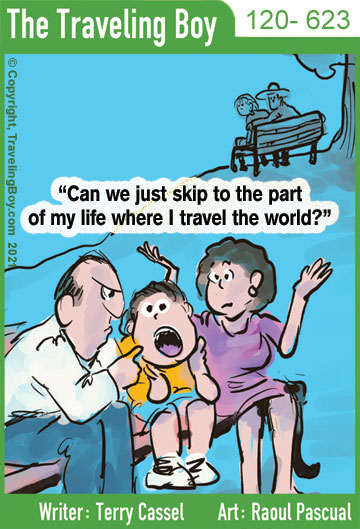Courtesy Gene Sloan, The Points Guy
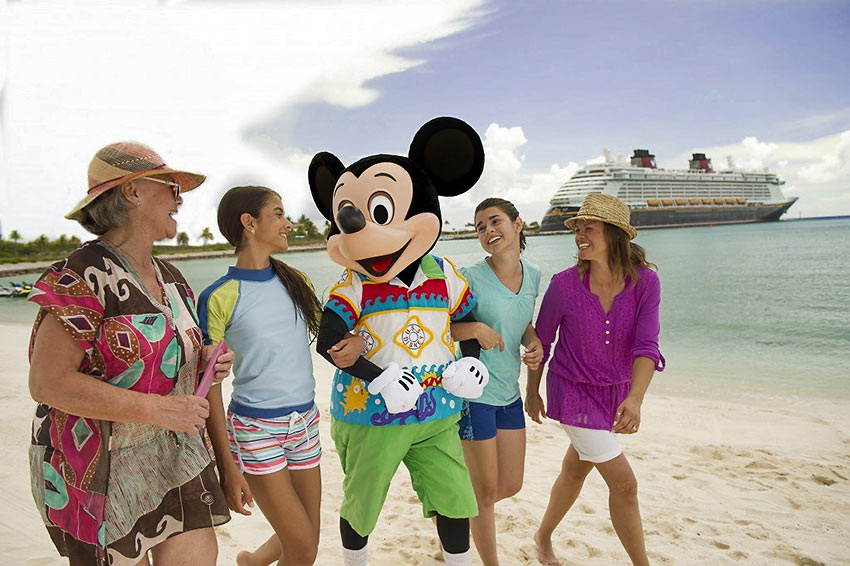
You might assume Disney is the Hercules of family cruising — the all-powerful competitor with no rival. But in the cruise world Disney is still somewhat of a niche player. With just four ships compared to the 52 operated by family cruise giants Carnival and Royal Caribbean, Disney is like the cruising equivalent of Olaf from “Frozen” — a bit secondary to the plot, if still much beloved. In terms of passenger capacity, Disney is barely a tenth the size of Royal Caribbean alone, and it doesn’t offer nearly as diverse an array of home ports and itineraries.
What Disney does offer is Disney. From Disney tunes piped into cabin hallways and Disney-shaped food items on menus to Disney-themed evening shows and the promise of meeting your favorite Disney princess, Disney ships are mouse bait for the diehard Mickey lover. If Disney is your thing, nothing in cruising quite compares. Just be prepared to pay up big time for the privilege of sailing with Captain Mickey or Minnie (more on that in a moment).
Carnival long has claimed to be the biggest cruise line for families, with more than 800,000 children a year traveling on its 26 ships (out of 5.2 million total passengers). Known for its affordability as well as its lively, unpretentious, fun-focused vibe, this is the most budget option of the three lines we are comparing. You’re likely to pay considerably less to sail with Carnival than Royal Caribbean or Disney.
For families craving the mega-resort experience, there’s nothing quite like a Royal Caribbean vessel. The biggest of the line’s 26 ships are more than 70% bigger than the biggest Disney and Carnival ships afloat and feature a lot more “stuff” that will get your kids’ hearts racing — everything from rock-climbing walls and surfing pools to skydiving simulators and ice-skating rinks. Royal Caribbean also will offer you a lot more choices when it comes to itineraries. The line will have eight ships in Europe this summer, for instance, compared to one for Disney and none for Carnival. (Carnival, it should be noted, is a line that primarily focuses on cruises out of US ports that are easy for its budget-conscious customers to reach by car or with a short, inexpensive flight.)
Comparing Prices: A Specific Example
In general, on very similar itineraries, you’ll a pay a premium — sometimes a huge premium — to take your teens and toddlers on a Disney ship instead of a Royal Caribbean ship, and both of those lines will cost you more than Carnival. Just how much more? We priced similar summer sailings to the Caribbean on the three lines and found a hypothetical family of four would pay about 71% more to get aboard a Royal Caribbean ship than a Carnival ship and 163% more to sail with Disney.
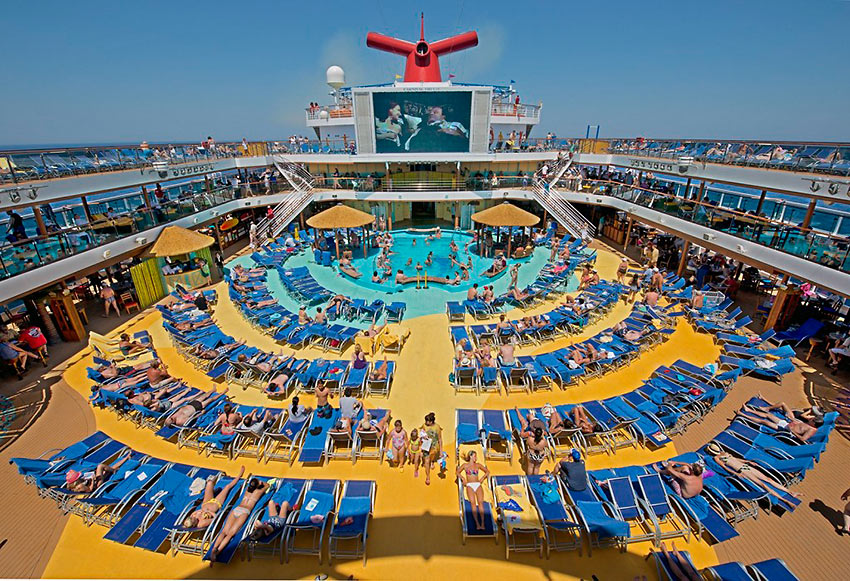
For the comparison, we looked at specific seven-night Eastern Caribbean sailings offered by each line out of Port Canaveral, Florida, for the week of Aug. 10. We chose this routing because it allowed for one of the most apples-to-apples matchups you can make between the brands. All three of the companies have positioned one of their newest, snazziest vessels in Port Canaveral for seven-night Caribbean sailings.
In Carnival’s case, it’s Carnival Breeze, which debuted in 2012 and is one of the line’s newer Vista-class vessels. For Royal Caribbean, it’s Harmony of the Seas, which began sailing in 2016 and is part of the line’s popular Oasis class. Disney’s contender in the market is Disney Fantasy, the line’s newest ship. It debuted in 2012, just two months before Carnival Breeze.
When pricing, we assumed we were booking a family with two adults and two children ages 8 and 12 who would share a single cabin. We found:
- The least expensive cabin available for Carnival Breeze at the time of our pricing would have set our family back $3,049.88 (an average fare of $632 per person, plus $130.97 per person in taxes and fees). For that, our family would have gotten an Interior with Picture Window (Walkway View) cabin measuring 185 square feet. Such rooms have two twin beds that convert into a king bed, plus a pull-down bunk for one and a sofa that converts into a bed for one.
- The least expensive cabin on Royal Caribbean’s Harmony of the Seas costs $5,221.82 (an average fare of $1,204.26 per person, plus $101.20 in taxes and fees). Notably, that higher price would have gotten our family a cabin measuring just 149 square feet — nearly 20% smaller than the cabin on Carnival Breeze. As with Carnival, it was an interior cabin — in this case with two twin beds that convert into a king bed and a double sofa bed.
- The least expensive cabin on Disney Fantasy costs a relatively sky-high $8,011.92 (an average fare of $1,907.64 per person, plus $95.37 in taxes and fees). For that, our family would have gotten a Standard Inside Stateroom that measures 169 square feet — a bit bigger than the comparable cabin on Harmony of the Seas but smaller than the one on Carnival Breeze. Such rooms have a queen bed, a sofa that converts into a single bed and a pull-down bunk.
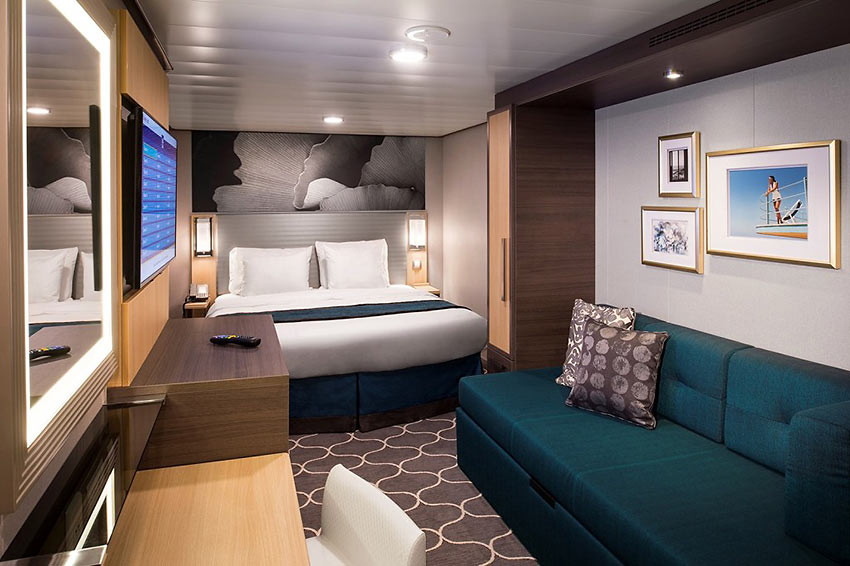
Trading Up to a Balcony Cabin: The Differential Stays the Same
Sometimes the cheapest cabin on a ship just won’t do, so we also priced the cost of trading up to a balcony cabin on each of the vessels — an exercise that helps to illustrate two big things.
First: A “splurge” on a balcony cabin versus an inside cabin isn’t nearly as costly as many people think. For all three of our ships, the upgrade added less than 10% to the total cost of the trip.
Second: The premium you’ll pay for a Disney or Royal Caribbean ship versus a Carnival ship is roughly the same when booking a balcony as it is when booking an entry-level cabin. In this case, we found our family of four would pay about 70% more to get on Harmony of the Seas than Carnival Breeze and 169% more to get on Disney Fantasy. Specifically:
- The least expensive balcony cabin on Carnival Breeze would have cost our family $3,259.88 (an average of $684 per person, plus taxes and fees). For that they would have gotten a Cove Balcony that has basically the same footprint as the previously priced interior cabin (its interior space is an identical 185 square feet) with the addition of a 45-square-foot balcony.
- The least expensive balcony cabin available on Harmony of the Seas costs $5,539.80 ($1,283.75 per person, plus taxes and fees). For that, you get a cabin overlooking the ship’s Boardwalk amusement area with 182 square feet of interior space and a 52-square-foot balcony.
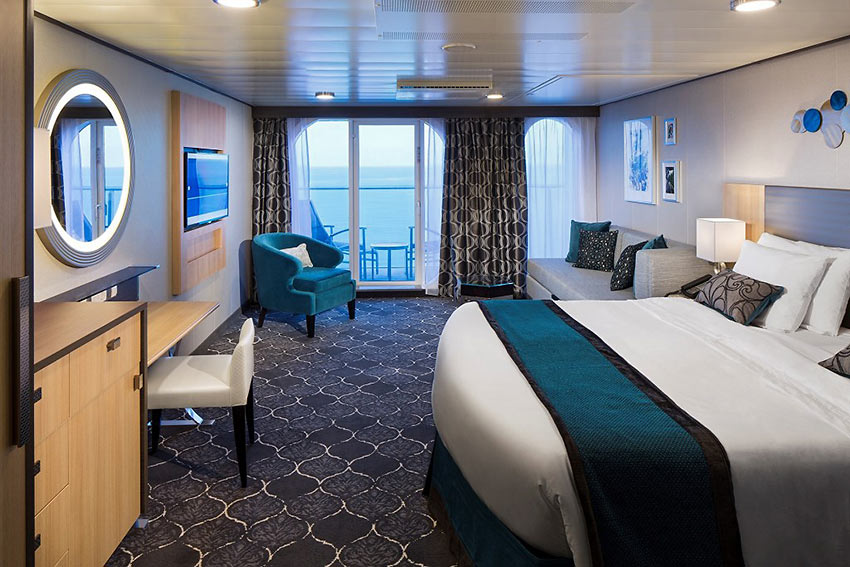
- The least expensive balcony cabin on Disney Fantasy costs $8,781.92 ($2,100.14 per person, plus taxes and fees). This for what the line calls a Deluxe Oceanview Stateroom with Extended Veranda — Mickey sure has a fondness for long names. These cabins have 203 square feet of interior space, plus a 43-square-foot balcony.
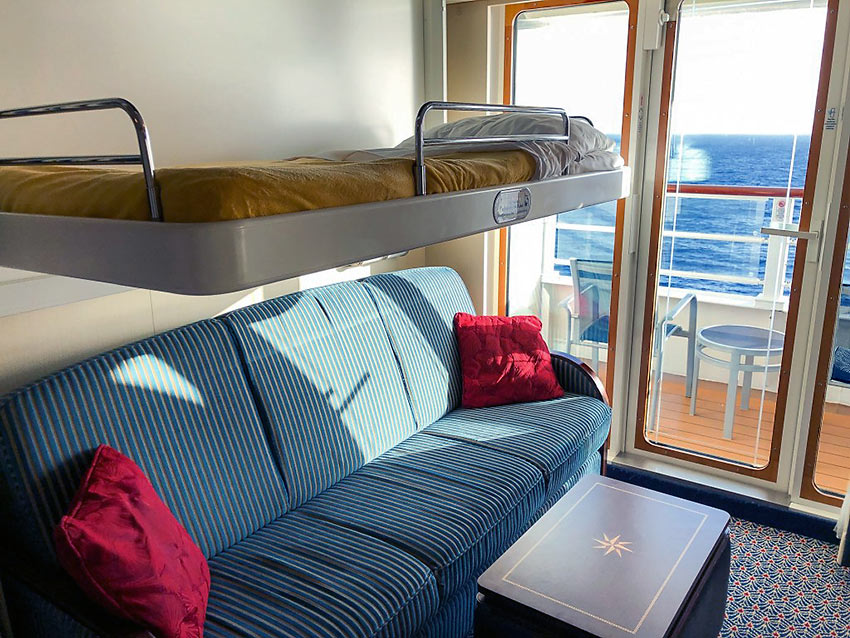
Related: The Best Credit Cards for Booking Cruises
Going Big With Suites and Concierge-Level Service
For those willing to splurge on even bigger cabins and upgraded service, the comparisons between the ships get more complicated.
Carnival offers relatively few suites on most of its vessels. Fewer than 75 of the 1,845 cabins on Carnival Breeze are suites. The line also lacks a premium “concierge class” of cabins that come with dedicated concierge service and other extras.
Royal Caribbean’s recent vessels, by contrast, are awash with suites in a wide range of sizes, including enormous (and super-pricy), two-deck-high complexes that are among the most luxurious accommodations at sea. Royal Caribbean, in recent years, also has added a concierge-class-like program for suite passengers on some of its vessels (Harmony of the Seas among them). Called Royal Suite Class, it offers more polished service and exclusive access to shipboard restaurants, lounges and attractions.
Like Carnival, Disney offers relatively few suites on its ships. Just 21 of the 1,250 cabins on Disney Fantasy are suites. But the line does offer exclusive Concierge cabins that come with access to a concierge team that can help arrange onboard activities and services. On Disney Fantasy, the Concierge service is available with all 21 suites, plus 20 nonsuite Concierge Family Oceanview Stateroom with Verandah cabins. In addition to concierge service, all 41 rooms come with access to a private concierge lounge and sun deck. Other perks include priority boarding.
For our hypothetical family:
- The least expensive suite on Carnival Breeze — a 340-square-foot Ocean Suite — priced at $4,784.88 ($1,065.25 per person, plus taxes and fees). This is, notably, still 40% less expensive than even the least expensive cabin available on Disney Fantasy.
- For the suite life on Royal Caribbean, our family would pay at least $7,702.80 ($1,824.50 per person, plus taxes and fees). That’s for a Junior Suite, which measures 367 square feet.
- The least expensive suite on Disney Fantasy priced at a stratospheric $21,742.56 ($5,340.30 per person, plus taxes and fees). That’s for a 622-square-foot Concierge 1-Bedroom Suite with Verandah. That said, you can get into one of the nonsuite Concierge cabins for about half that cost. Disney doesn’t call those cabins suites, but they measure a respectable 306 square feet. That’s not much smaller than the smallest suites on the other ships.
What’s Included and What’s Not
As regular cruisers know, the fares that lines quote for sailings include more than just your lodging. For all the ships in our comparison, the price also includes breakfast, lunch and dinner (at main restaurants and buffets); nightly entertainment in showrooms; and a significant swath of onboard activities. What’s not included are alcoholic and, in some cases, nonalcoholic drinks (Disney offers free sodas on its ships; the others don’t); meals at “specialty” restaurants; spa and salon services; shore tours and some onboard activities.
We won’t run through every extra charge here. But consider that you’ll pay around $6 to $7 for a beer on all three ships, and a cocktail can run anywhere from $7 to $14 (in general, Harmony of the Seas has the highest drink prices). Among extra-charge restaurants, you’ll find a flat fee of $38 per person at the signature steakhouse on Carnival Breeze, a tad less than the $43-per-person charge for the Chops Grille steakhouse on Harmony of the Seas. Disney Fantasy doesn’t have a steakhouse, but its signature, adults-only Palo eatery is in the ballpark at an additional $40 per person.
You’ll also pay extra for the service charges that have become commonplace on ships. For most cabins on Carnival, Royal Caribbean and Disney vessels, a family of four would pay $391.72, $406 and $378 per week, respectively, in such fees. Passengers in suites pay more.
The bottom line: It’s frustratingly easy for a family of four on any of these ships to run up $1,000 or more in extra charges.
Family Attractions
Each of the ships in our comparison is among the most alluring in their respective fleets for families. You’ll find watery play zones, family pools and other kiddie lures on the top decks of all three vessels, and plenty of supervised kid zones in their interiors.
Specifically, Carnival has loaded the top of Carnival Breeze with one of its signature, family-focused WaterWorks waterpark areas that has two giant waterslides, a soaking “dump bucket” and other get-you-wet features; a suspended-in-the-sky ropes course; a miniature golf course; and a basketball court. Family attractions on the inside of the vessel include a 3D theater with moving seats and special effects (a cruise ship rarity).
Not to be outdone, Disney has given Disney Fantasy one of the most innovative deck-top attractions at sea, the 765-foot-long AquaDuck “water coaster.” Disney Fantasy’s top deck also is home to a family pool, kiddie waterslide, kiddie play area, miniature golf course and basketball court. Its insides are loaded with some of the most elaborate children’s play areas at sea — all Disney themed, of course.
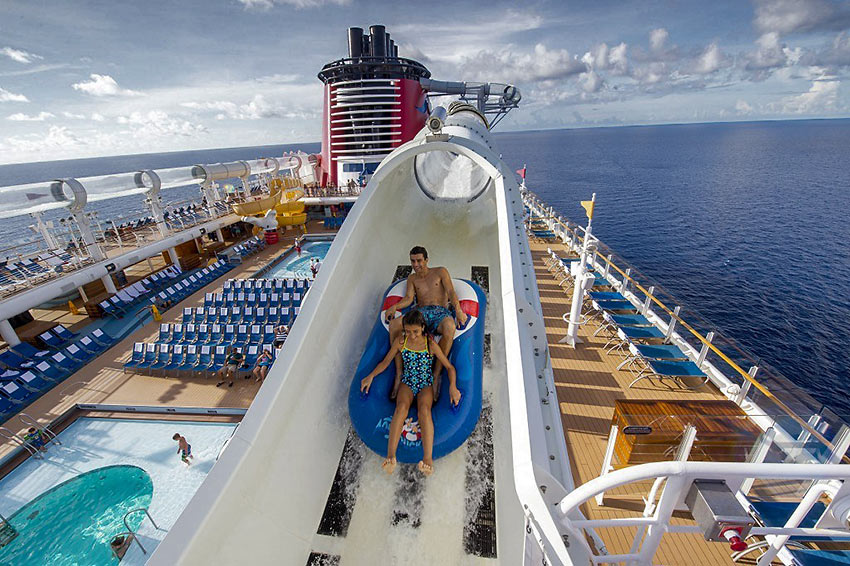
Still, when it comes to family-friendly attractions, neither Carnival Breeze nor Disney Fantasy comes close to offering the array of options available on Harmony of the Seas.
At 226,963 gross register tons, the ship is about 75% bigger than its two competitors, and all that extra space allows for a crazy array of amusements. You’ll find a waterpark area with three large slides; a separate dry slide that plunges nine decks (Royal Caribbean says it’s 10, but don’t be fooled; it counts a Deck 13 that doesn’t exist); three main pools and separate surfing pools; a watery kiddie play zone; two rock-climbing walls; a miniature golf course; a basketball court; and a zip line. There’s also an outdoor Boardwalk area that mimics the Jersey Shore with a carousel and arcade. Teens have their own onboard disco, part of interior kid zones spread over parts of two interior decks.
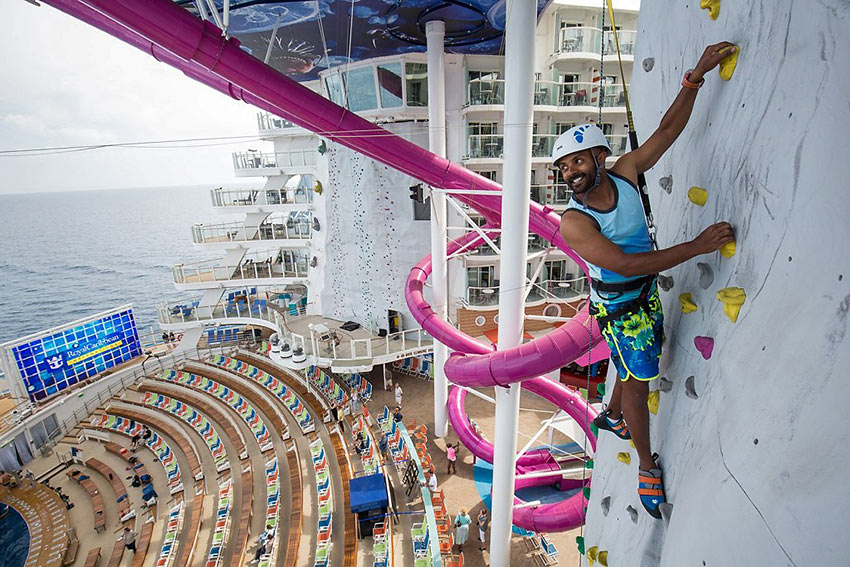
Crowds and Service
On all three of the ships in our comparison, you’re going to feel the crowds at times (just ask TPG Family founder Summer Hull, aka Mommy Points, who recently wrote about the pool area pileup she saw during a Disney sailing). This is just par for the course on big, mass-market vessels that sail with thousands of people.
Still, when it comes to feeling the jam, there are some significant differences between the three ships in our comparison.
For starters, you’ll often find more people packed onto Carnival Breeze than Disney Fantasy, even though the two ships are roughly the same size (about 130,000 gross register tons). Carnival Breeze can hold up to 4,891 passengers if every berth is filled, about 22% more than Disney Fantasy. The differential is even more notable if you look at the “double occupancy” numbers for the two ships — the number of people they would carry if two people occupied every cabin. Carnival Breeze’s capacity based on double occupancy is 3,690 — nearly 48% higher than the comparable number for Disney Fantasy. Packing in more people on a similarly sized ship is one of the key ways Carnival keeps it price point low. Another way is by keeping tight controls on staffing. Carnival Breeze sails with a staff of 1,386 — 72 fewer than Disney Fantasy. The result: A crew-to-passenger ratio, based on total occupancy, of about 1 to 3.5 for Carnival Breeze versus 1 to 3.2 for Disney Fantasy.
Comparing crew-to-passenger ratios on ships can offer a rough guide to their service levels, though there are caveats to this approach. A significant chunk of the extra staff on Disney Fantasy are involved in the ship’s entertainment program, which is far more elaborate. It doesn’t necessarily mean Disney is devoting more staff to service positions in restaurants, bars and other areas. Meanwhile, of the three vessels in the comparison, it is Harmony of the Seas — the ship with, by far, the highest passenger capacity — which boasts the best crew-to-passenger ratio. While the ship can sail with up to 6,687 people, it operates with 2,200 crew. That gives it a crew-to-passenger ratio, based on total occupancy, of around 1 to 3.
Destinations and Private Islands
As noted above, our pricing comparison for the ships assumes an Eastern Caribbean itinerary out of Port Canaveral, Florida. While roughly similar, the routings that each of the vessels take are not identical:
- Carnival Breeze stops at Amber Cove, Dominican Republic; St. Thomas, US Virgin Islands; San Juan, Puerto Rico; and Grand Turk in the Turks & Caicos.
- Harmony of the Seas also visits San Juan, but substitutes St. Maarten and Royal Caribbean’s private island in the Bahamas, Perfect Day Island at CocoCay, for the other ports.
- Like Carnival Breeze, Disney Fantasy heads to St. Thomas, but combines it with visits to Tortola in the British Virgin Islands and Disney’s private island in the Bahamas, Castaway Cay.
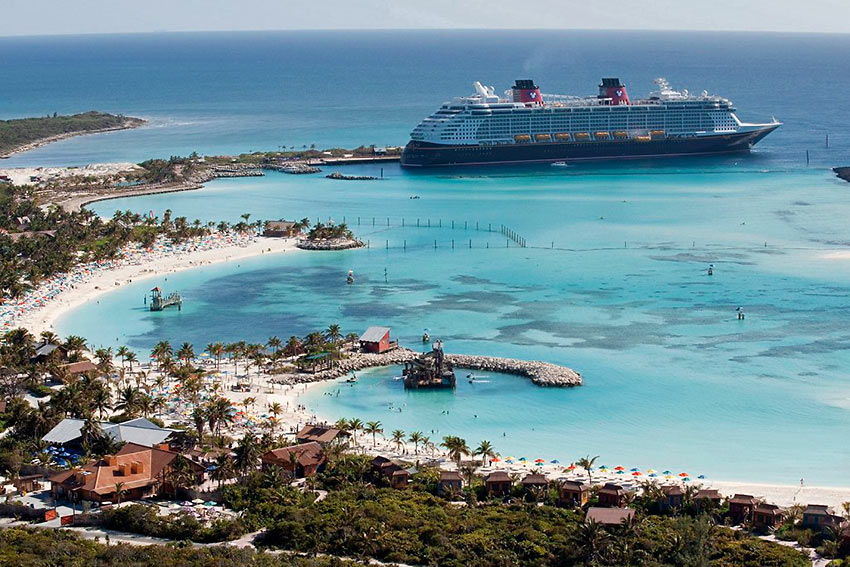
When it comes to private islands, Royal Caribbean’s Perfect Day is the most elaborate by far. The line is just finishing a $200 million overhaul of the getaway that has brought a major waterpark with 13 waterslides, including the tallest one in North America; the Caribbean’s largest freshwater pool; the Caribbean’s largest wave pool and a balloon ride that takes you up 450 feet above the island. There’s also an exclusive — and expensive — private beach club coming in December.
Disney’s Castaway Cay is more of a traditional cruise line private island with beach areas (snorkels, tubes and floats are available for rent), a small floating waterslide complex and games such as volleyball. You also can rent bikes for a bit of exploring around the island. Paddleboards, kayaks and aquabikes are also available.
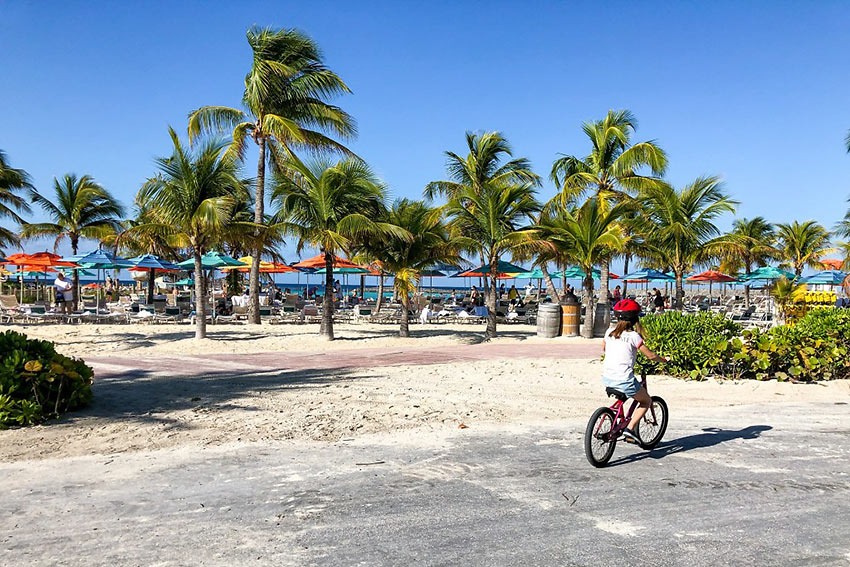
While Carnival doesn’t have a private island of its own, two of the stops on Carnival Breeze’s itinerary are private port developments built by its parent company that come with their own pool areas and more. The 25-acre Amber Cove development has a sprawling pool with a swim-up bar, waterslides, zip lines and private cabanas as well as bars, restaurants and shops. The 18-acre Grand Turk Cruise Center complex has its own pool area, beach areas and cabanas as well as bars, restaurants and shops.
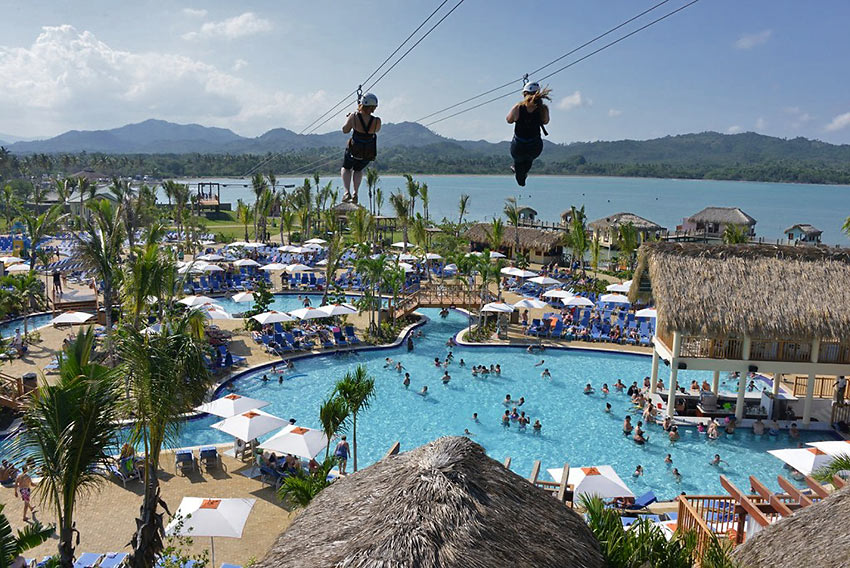
The Bottom Line
I’ve sailed on all these lines many times over the years, and they all offer a lot for families. Which one is right for you? The answer depends on a number of factors specific to you and your family: your budget, the ages of your kids, their personalities and interests in specific activities and the destinations that you hope to see.
For those on a tight budget, Carnival is hard to beat — as the pricing comparison above makes clear. But if you have a little more wiggle room with your pocketbook, there are good arguments for paying up for a week with Royal Caribbean or Disney. When it comes to the quality of service, entertainment and dining, it’s a little bit of “you get what you pay for” with the lines.
As noted above, you’ll find a higher ratio of crew-to-passengers on Royal Caribbean and Disney ships, and all those extra crew members do make a difference in the experience. The difference is particularly notable when it comes to entertainment offerings, with both Royal Caribbean and Disney fielding much more elaborate shows with bigger casts and name-brand stories. Royal Caribbean’s Harmony of the Seas, for instance, features a 90-minute adaptation of one of Broadway’s biggest crowd-pleasers, “Grease,” in a soaring theater that puts many on Broadway to shame, plus an outdoor “aquatheater” that’s home to dazzling aerial performances. Disney’s ships are chock full of Disney-themed entertainment that wins kudos for its high production values.
With its greater number of “older kid” amusements, such as surfing pools and rock-climbing walls, Harmony of the Seas is a particularly good choice for families with teens. Disney ships, like many of the Disney parks, aim younger with their attractions and are probably best when your kids are in the 6- to 12-year-old range. Just remember that you’re paying a hefty “Disney premium” to get on board. If you’re a big Disney fan, it makes sense. If you’re not, it probably doesn’t.







